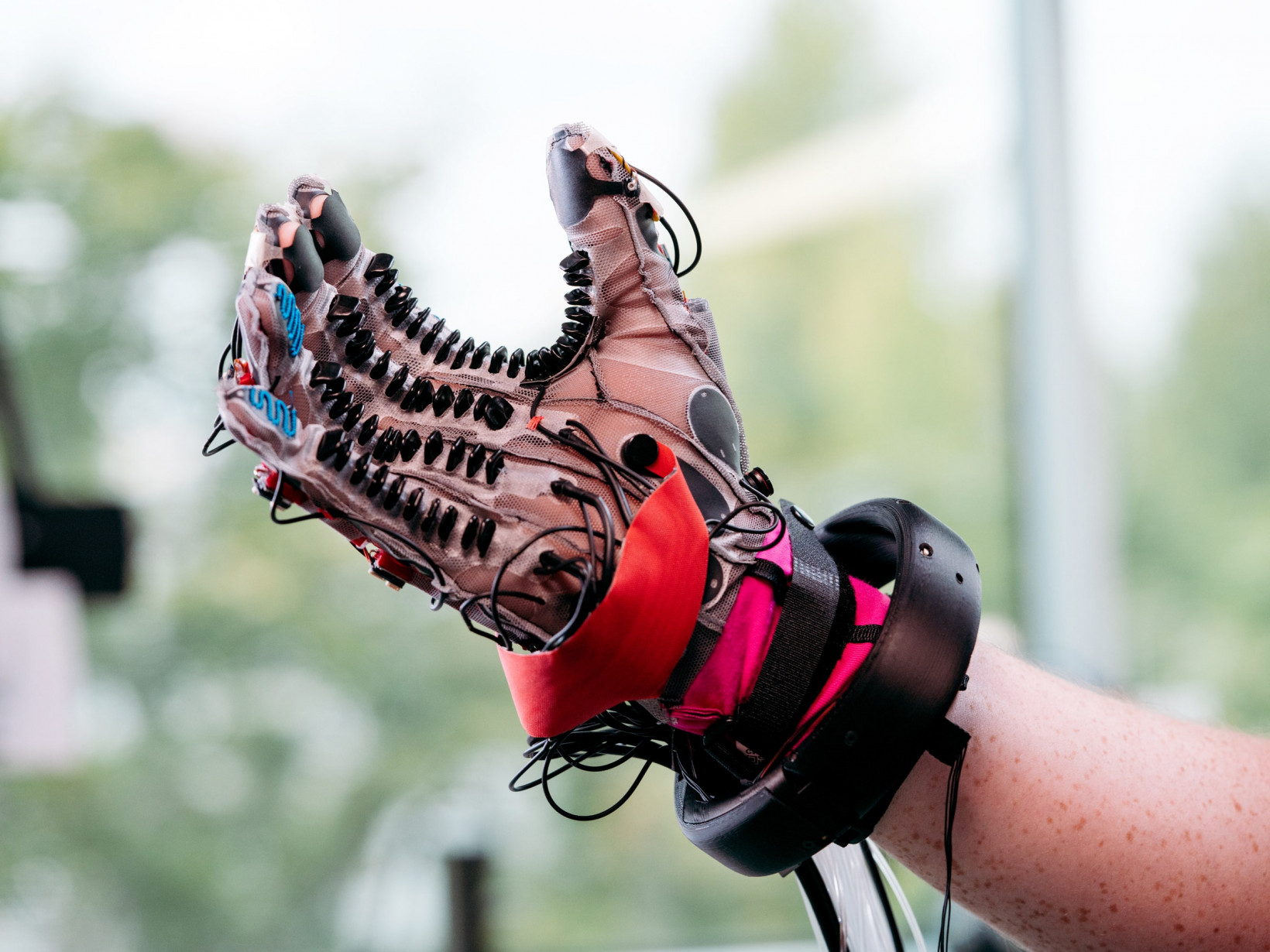Facebook has renamed itself Meta, and the company is totally dedicated to the creation of a metaverse. It will need to introduce a number of ground-breaking devices, controllers, and supporting gear in order to realise its ambitious ambition.
The following is a summary of everything we’ve observed so far:
Gloves with haptics
Gloves featuring haptic feedback for virtual reality are included in a series of prototype gadgets. These gloves are designed to simulate the sensation of grasping an item or moving your hand over a virtual world surface.

Meta’s engineers accomplished this by using newly developed soft actuators. These are soft motors located throughout the glove that work in unison to provide physical sensations while the gloves are worn.
Additionally, the gloves include a microfluidic chip that regulates the airflow used to move these actuators. According to Meta, this technology will generate a feeling in your palm depending on the texture, weight, and rigidity of the virtual item. Thus, whether you pick up a feather or a metal ball in the virtual world, you will be able to ‘feel’ differently.
According to the corporation, its engineers have been developing these gloves for over seven years and they are not yet ready for market distribution.
Cambria Project
A headset is a necessary component of entering the metaverse. While Facebook currently has a successful product in the form of Oculus Quest 2, the company has stated an interest in developing a more powerful gadget.
The new headgear, codenamed Project Cambria, will be a premium product with a premium price tag to match. According to reports, this might be the anticipated Oculus Pro, which would have a fast CPU, a high-resolution display, and enhanced hand tracking.
Last month, Mark Zuckerberg said that the company intends to introduce this headgear next year. Thus, we do not have to wait long.
ReSkin
Meta’s efforts are not limited to persuading us to ‘feel’ virtual items. Additionally, it is focused on giving robots feelings through artificial skin.
The company’s artificial intelligence branch collaborated with academics at Carnegie Mellon University to create ReSkin, a 2-3mm thick touch sensor.
ReSkin is capable of sensing forces as little as 0.1 newtons applied to 1mm diameter objects. As a result, it is an excellent material for robotic hands, tactile gloves, and arm sleeves.
Because this artificial skin is powered by magnetic impulses rather than electricity, just the detecting electronics must be located near the surface.
Meta said that it costs around $6 per unit to make 100 units, and the price point might decrease further if the business scales up production. This simplifies the process of replacing damaged or worn-out patches.
You may learn more about ReSkin’s technical specifications here.
Wrist-based controls for augmented reality
While virtual reality and augmented reality headsets are the metaverse’s early frontiers, every corporation wants to be a part of a future with stylish augmented reality spectacles.
Apart from glasses, you’ll also need a controller to interact with items in augmented reality. Meta demonstrated wrist-based bands that monitor hand motions in March.
Electromyography (EMG) is used in these concept wrist bands to detect and convert electric signals produced by wrist motions.
Initially, this technology will recognise actions such as pinching and releasing fingers.
According to the business, the technology could identify signals even if your fingers moved a millimetre. This might be advantageous for developing an algorithm that operates only on the movement’s purpose.
For instance, your augmented reality glasses may display a keyboard onto any flat surface, and it will be able to recognise all your keystrokes with the aid of the wristbands. That sounds rather posh.
The business featured two prototypes in its presentation, dubbed Bellowband and Tasbi (Tactile and Squeeze Bracelet Interface). It employed eight pneumatic bellows to manipulate the air inside and provide haptic experiences for Bellowband.
By contrast, Tasbi makes use of six vibrotactile actuators and a novel wrist squeeze mechanism.
Meta put these bands through a variety of situations, including pushing simulated buttons and experiencing the texture of various surfaces.
Additionally, the business intends to employ haptics to provide feedback on the workouts you’re undertaking, such as accurately drawing a virtual arrow with a virtual bow.
Aria Project
While Meta is aiming for AR domination, its initial idea project is relatively humble. It presented its wearable spectacles, codenamed Project Aria, last year.
This year, we learned more about this’sensor platform,’ courtesy of a Protocol report. These glasses are not equipped with a head-mounted display. As a result, there will be no Google Glass-like functionality or augmented reality effects. It has our cameras as well as three buttons for power, capture, and mute. At the very least, this seems to be a Snap Spectacles rival.
What comes next
For the time being, this is all we know about Meta’s metaverse device approach. While certain devices, like as the Project Cambria headgear, may be available next year, others, such as haptic gloves, may not be available for many years.
Earlier last year, the corporation committed $10 billion to the development of metaverse hardware and software. Therefore, do not be shocked if we see more of these bizarre (or disturbing) prototypes in the near future.
